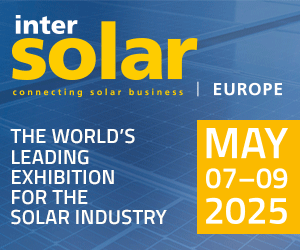.Phoenix Solar requires changes to be made in the calculation of cost allocation under the German Renewable Energies Act (EEG) to reduce the charges passed on to electricity consumers .
Stock exchange prices are not suitable benchmark for calculating photovoltaic electricity .In 2010, the macro-economic benefits of photovoltaics will exceed the cost of feed-in tariffs for the first time
Sulzemoos, 3 November 2010 / Phoenix Solar AG (ISIN DE000A0BVU93), a leading photovoltaic system integrator listed on the German TecDAX, today presented “The True Value of Photovoltaics in Germany” study on the calculation of the differential cost of photovoltaic electricity and the costs and benefits of photovoltaics. The intention of this study is to present an objective standpoint on the as yet very emotional debate on the charges from photovoltaics borne by electricity consumers.
The findings of the study carried out by A.T. Kearney, a consultancy company highly experienced in energy issues, focus on four key statements:
1. The stock market price on the Leipzig-based European Energy Exchange is unsuitable as a benchmark for pricing photovoltaic electricity. In effect, photovoltaic electricity substitutes for peak- and medium-load power stations run on gas and hard coal in the power grid. This is why the full costs of these fossil-based sources of energy should be compared with the costs of photovoltaics. A mere adjustment in the calculation reduces the charges levied for photovoltaics in 2011 by up to 18 percent, namely from 1.67 cents per kilowatt hour (ct/kWh) down to potentially 1.38 ct/kWh. If, in 2011, the volume of systems installed comes to six gigawatts rather than the 9.5 gigawatts anticipated by transmission grid operators, charges would be as much as 24 percent lower and come to 1.28 ct/kWh.
2. Macro-economic breakeven for the installed output of photovoltaics will have already been achieved by the end of 2010, which means that the benefits of photovoltaic systems installed in 2010 will outweigh the costs for the first time. Furthermore, by the end of 2011, all photovoltaic systems connected to the grid under the German Renewable Energies Act (EEG) since 2000 will have reached breakeven in Germany if, in line with assumptions, another six gigawatts (GW) of peak power are installed in 2011.
3. Measured against new gas- and hard coal-fired power stations, photovoltaics will be able to deliver competitive electricity in the next five to eight years. A precondition is a fair recognition of costs for both photovoltaics and for power stations generating electricity from conventional sources of energy. From this point onwards, tax plus grid costs can be levied on photovoltaic electricity, similar to conventional power.
4. Photovoltaics accelerates the structural transition to an efficient, intelligent world of energy with a high proportion of decentralised power generation. Photovoltaics therefore enables wide swathes of the population to participate in the supply of energy. In addition, it generates impetus for the development of innovative, decentralised energy systems and integrated applications, such as charging stations for electrical vehicles, which underpin Germany’s technological cutting edge in the field of renewable energies.
Phoenix Solar has derived the following requirements and recommendations from the findings of the study:
.The basis for calculating the differential costs must be adjusted to the actual conditions pertaining to the respective type of power generation. The cost of photovoltaic electricity must be compared with the electricity which it replaces at production times in the grid, specifically electricity generated by gas and hard coal-fired power stations. The result would be a notable reduction in the differential costs, which means that electricity consumers would pay much less.
.A paradigm shift in the allocation of costs of conventional and renewable energies reflecting where these costs are incurred is necessary.
“Our long-standing doubt about the accuracy of how the differential costs has been calculated up until now has been confirmed through the findings of the study”, stated Dr. Andreas Hänel, Chief Executive Officer of Phoenix Solar. “Our intention with this study is to encourage the urgently needed discussion about the true value of photovoltaics.”
“It came as a surprise to us that the combination of sharp reductions in tariffs and the high volume of installed capacity in 2010 has enabled breakeven to be exceeded in Germany. Particularly against the background of the sharp criticism of government promotion under the German Renewable Energies Act (EEG), photovoltaics demonstrates its ability from an economic standpoint of contributing to the sustainable generating of electricity in Germany”, explained Jochen Hauff, leading author of the A.T. Kearney study.
More information and a summary of the study and charts are coming soon: www.phoenixsolar.com/press/surveys
About Phoenix Solar AG
Phoenix Solar AG, which has its headquarters in Sulzemoos near Munich, is a leading international photovoltaic system integrator. With total revenues of EUR 473 million, the Group achieved an EBIT of EUR 12.2 million in the financial year 2009. The company develops, plans, builds and takes over the operation of large-scale photovoltaic plants and is a specialist wholesaler for complete power plants, solar modules and accessories. The Group is a leader in photovoltaic system technology. It focuses on the consistent lowering of system costs. With a sales network throughout Germany and subsidiaries in Spain, Italy, Greece, France, Singapore, Malaysia, Oman, Australia and the USA, the Group currently has a workforce of more than 350 employees. The shares of Phoenix Solar AG (ISIN DE000A0BVU93) are listed on the official market (Prime Standard) of the Frankfurt Stock Exchange and on the German TecDAX, Deutsche Börse AG’s technology index.










